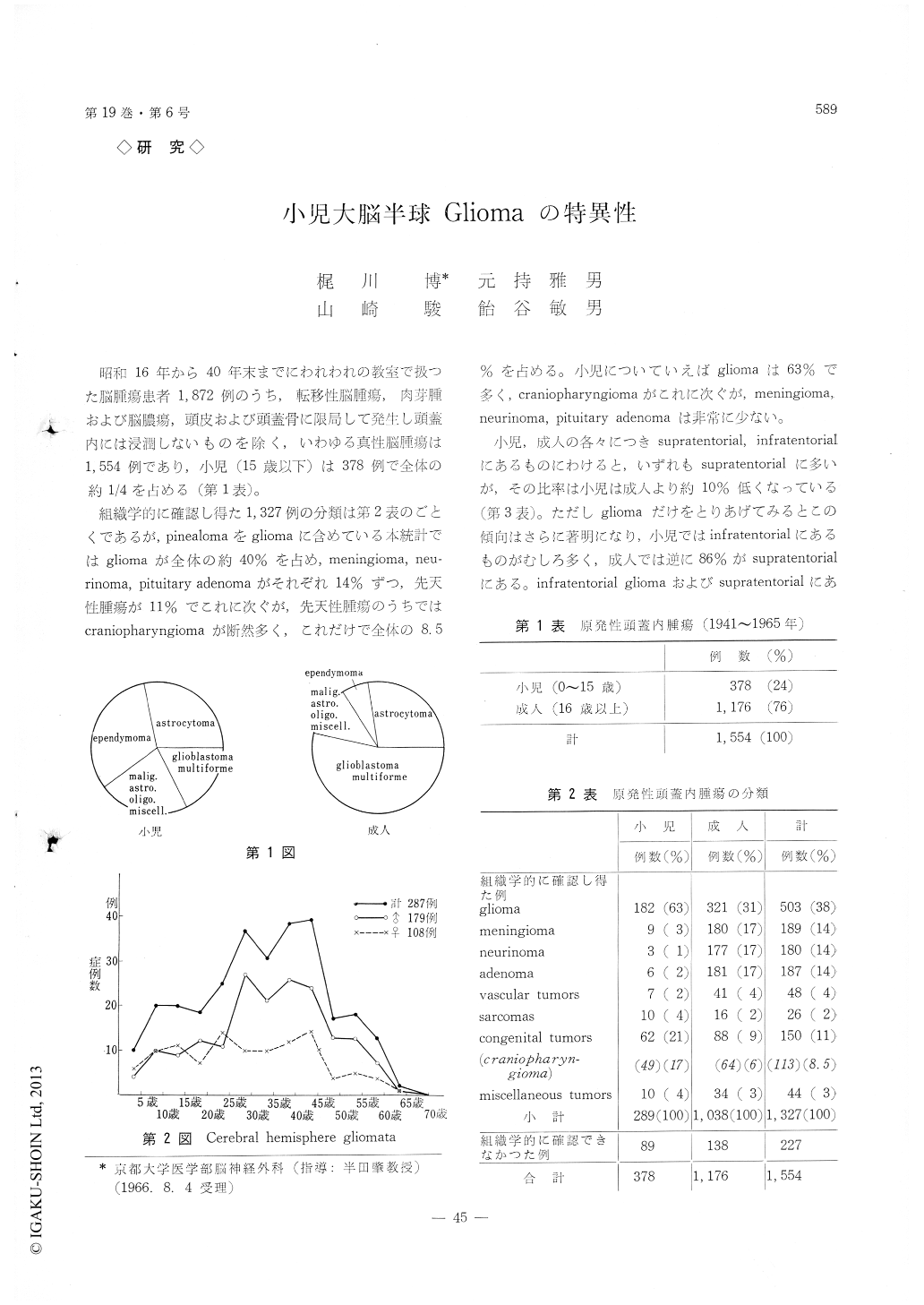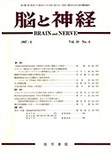Japanese
English
- 有料閲覧
- Abstract 文献概要
- 1ページ目 Look Inside
昭和16年から40年末までにわれわれの教室で扱つた脳腫瘍患者1,872例のうち,転移性脳腫瘍,肉芽腫および脳膿瘍,頭皮および頭蓋骨に限局して発生し頭蓋内には浸潤しないものを除く,いわゆる真性脳腫瘍は1,554例であり,小児(15歳以下)は378例で全体の約1/4を占める(第1表)。
組織学的に確認し得た1,327例の分類は第2表のごとくであるが,pinealomaをgliomaに含めている本統計ではgliomaが全体の約40%を占め,meningioma, neu—rinoma, pituitary adenomaがそれぞれ14%ずつ,先天性腫瘍が11%でこれに次ぐが,先天性腫瘍のうちではcraniopharyngiomaが断然多く,これだけで全体の8.5%を占める。小児についていえばgliomaは63%で多く,craniopharyngiomaがこれに次ぐが,meningioma,neurinoma, pituitary adenomaは非常に少ない。
This review is based on 287 patients with gliomas in the cerebral hemisphere which accounted for 21.6% of all primary intracranial tumors which verified histologically and 57.1% of all intracranial gliomas in our clinic for the period from 1941 to 1965 (Table 2, 5).
Of these, 50 were children below 15 years and 237 were above 15 years. Gliomas, primarily located at optic chiasma, within the third ventricle or in the pineal region, are not included. The following facts were obtained.
1) Cerebral hemisphere gliomas accounted for 74% of all intracranial gliomas in adults, whereas only 28% in children (Table 4).
2) In adults, glioblastoma multiforme accounted for 53% of all gliomas and ependymoma was far less in occurrence (about 7%). In children, however, the incidence of ependymoma (32%) was more fre-quent than glioblastoma multiforme (18%) (Fig. 1).
3) Gliomas were predominantly distributed in the frontal lobe in adults and equally involved in the frontal, parietal, and temporal lobes in children (Fig. 3).
4) Gliomas often developed in an enormous size without obvious increase of intracranial pressure in children, and 40% of juvenile cases occupied two or more lobes at the time of operation (Table 7).
5) Life expectancy after surgical removal of astro-cytoma was generally better in children that in adults, because of possibly higher occurrence in malignant changes of astrocytoma in adults than in children (Table 10).
6) Prognosis of glioblastoma multiforme was worse in children than in adults, and the prognosis of juvenile cases with tumors in the parietal lobe was relatively better (Table 6, 11).

Copyright © 1967, Igaku-Shoin Ltd. All rights reserved.


